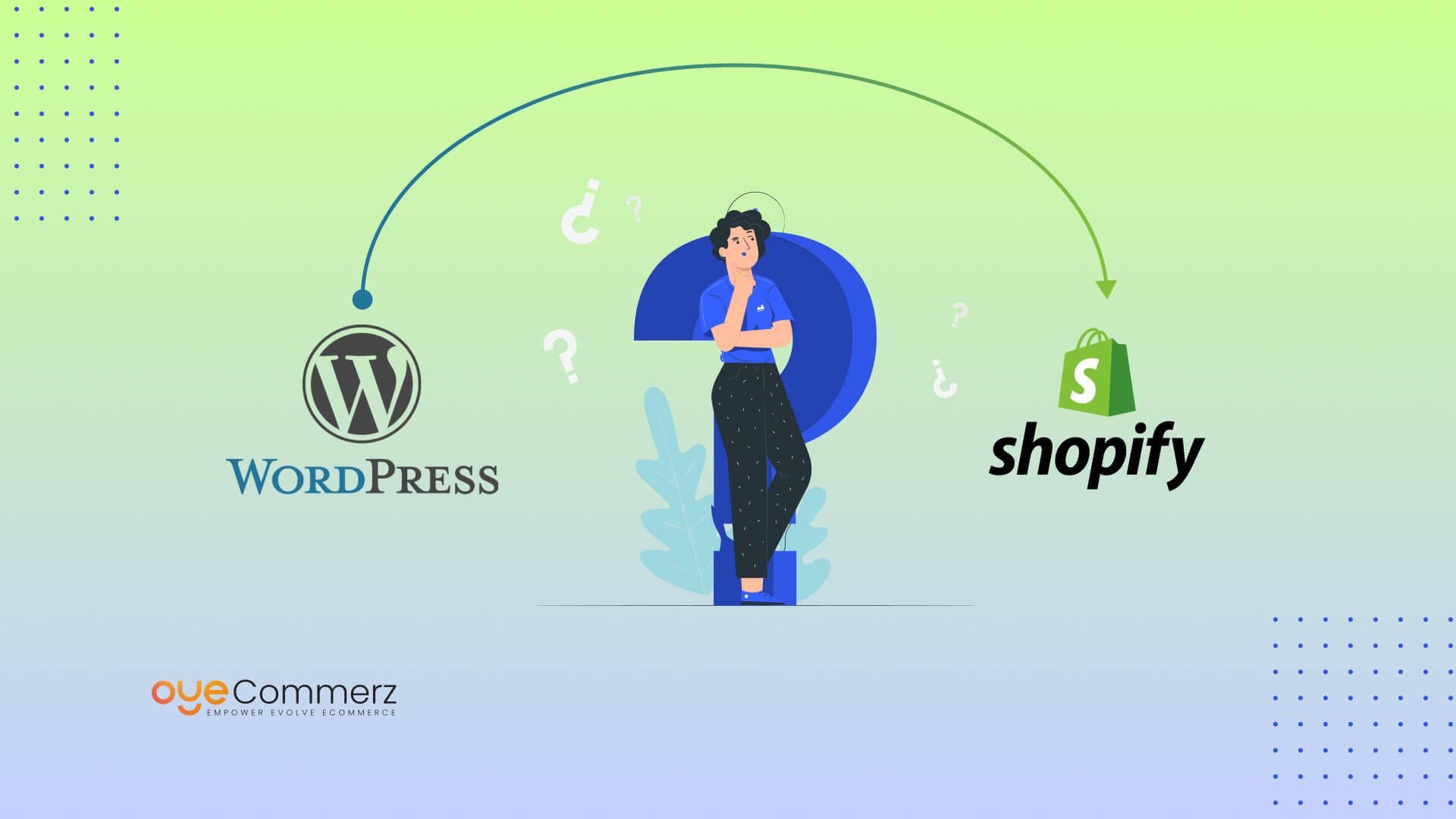Shifting from WordPress to Shopify is an promising step toward optimizing your e-commerce processes. As businesses grow, selecting a solution that aligns with scalability, UX, and customization becomes crucial. Shopify has emerged as a favorite for online merchants, offering unmatched flexibility, security, and user-friendliness. In this guide, we will delve into the transformative impact of this migration, highlight the advantages, and share practical tips to ensure a smooth transition.
1. Why Migrate from WordPress to Shopify?
The combination of WordPress and WooCommerce, continues to support countless e-commerce platforms. However, as businesses expand, issues like plugin dependency, data risks, and complex setups often obstruct progress. Shopify, designed explicitly for e-commerce, addresses these concerns with an all-in-one, user-friendly platform. Statistics back this transition—Shopify powers over 4.4 million websites worldwide, with a documented 10% boost to sales performance for many businesses post-switch.
2. Key Benefits of Shopify for E-commerce Success
Shopify’s powerful platform is tailored for scaling businesses. Its standout benefits include:
- Seamless Customization: Shopify provides over 80 expertly crafted themes.
- Built-in Features: Features like Shopify Payments and built-in SEO streamline operations.
- Global Reach: Multi-currency support and localization features empower businesses to expand internationally.
Additionally, Shopify delivers an availability percentage of 99.98%, guaranteeing your store remains accessible.
3. Getting Ready for Your WP-to-Shopify Transition
Before migrating, assess your current store. Analyze inventory details, customer details, and search engine rankings. Tools like Shopify’s Migration Kit or third-party solutions can simplify this process. Develop a detailed strategy, making sure all resources—item details, images, and blog content—are ready for seamless import.
4. The Importance of Accurate Data Migration
Transferring your data is a cornerstone of a smooth transition. When migrating from WP to Shopify, focus on:
- Inventory Details: SKU, item summaries, and groupings.
- Client Information: Emails, purchase records, and custom fields.
- Shopify store migration checklist Search Engine Considerations: Retain meta tags, URLs, and forwarding paths to maintain search rankings.
Use tools such as LitExtension to streamline data transfer while minimizing errors.
5. Customizing Your Shopify Store
After the move, personalizing your Shopify store helps it aligns with your business identity. Utilize Shopify’s intuitive page builder to design pages effortlessly. Shopify's themes are mobile-responsive, ensuring a smooth user experience across platforms—a key point, given 74% of e-commerce traffic comes from mobile visitors.
6. Maintaining SEO During Migration
SEO is vital for maintaining your visibility during migration. Shopify is highly optimized for search engines with clean URL structures, preloaded features, and smooth content management. Make sure you:
- Set up URL forwarding for existing links.
- Optimize new pages with targeted phrases.
- Use Shopify's apps Plug in SEO to monitor performance post-migration.
7. Essential Tests After Migrating to Shopify
After finishing the transfer, run detailed checks.
Check: - Page load times (Shopify boasts faster speeds compared to WordPress).
- Functionality of payment gateways and checkout processes.
- Adaptability across devices.
Quality assurance guarantees your store provides a smooth shopping journey from day one.
8. Case Study of a Successful Migration
An example of effective platform switching is Gymshark, a fitness apparel brand that transitioned to Shopify. After the switch, the company experienced a 60% boost in mobile sales and reduced site downtime. This showcases the potential of Shopify in enhancing online business success.
9. Overcoming Common Migration Issues
Migration is not without obstacles, such as data integrity and reconfiguring custom functionalities. However, Shopify’s robust support and third-party experts make overcoming these hurdles manageable. Partnering with experienced Shopify developers ensures a trouble-free transition.
10. Making the Switch: The First Step Toward Success
Migrating from WordPress to Shopify marks a forward-thinking approach to e-commerce. By addressing scalability, simplifying management, and enhancing the customer experience, Shopify empowers businesses to thrive in Bulk migration to Shopify competitive markets.
Final Thoughts
Transitioning from WP to Shopify offers a smart solution that can greatly enhance your online business performance. With a robust migration plan, the appropriate resources, and professional guidance, you can achieve new growth opportunities.
Excited to start the journey? Reach out today to learn how our Shopify migration services can revolutionize your online store. Get in touch today, or consider: Can your business afford to miss out on Shopify’s growth potential?
